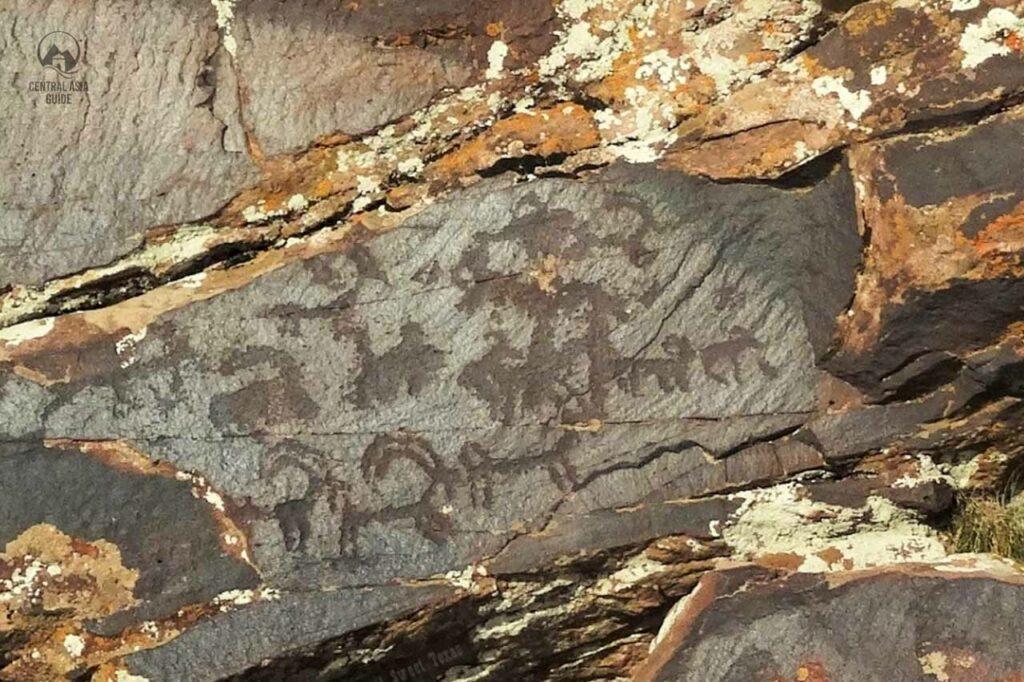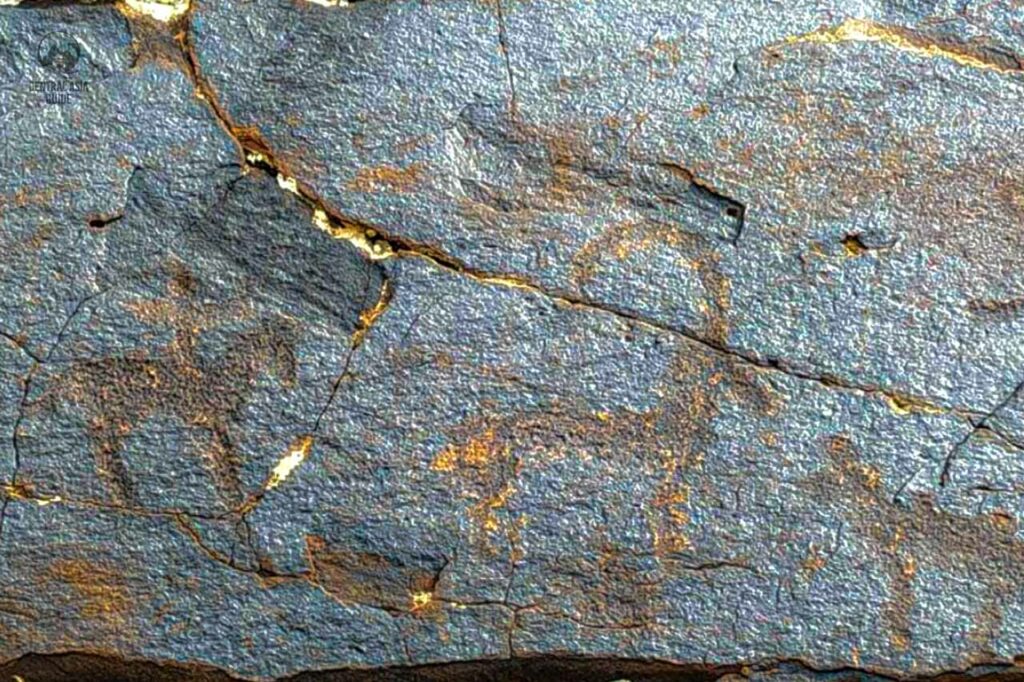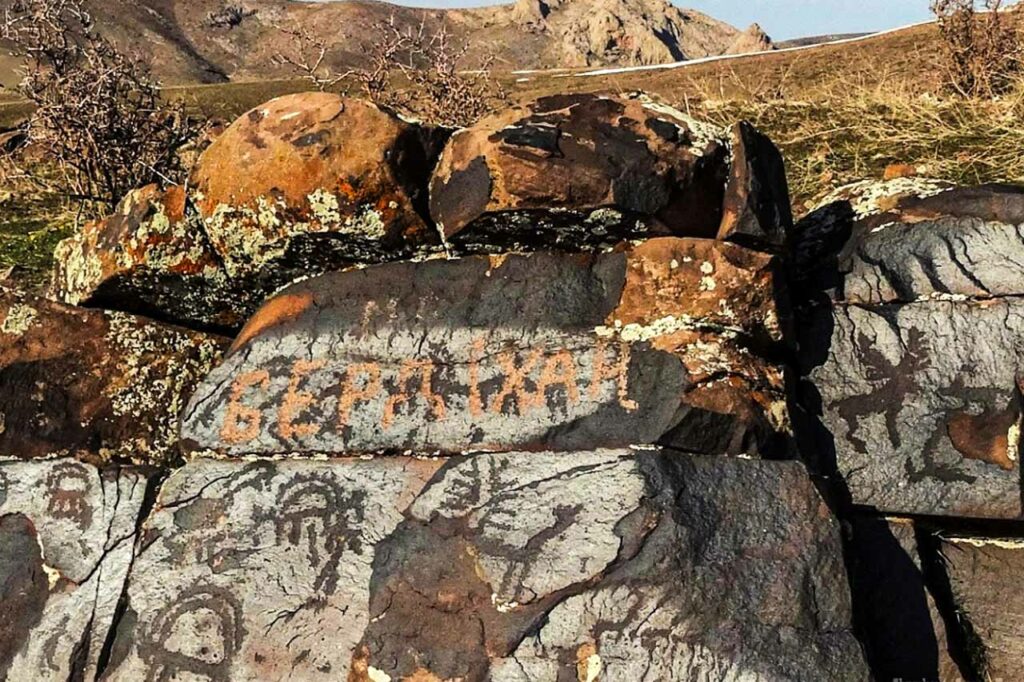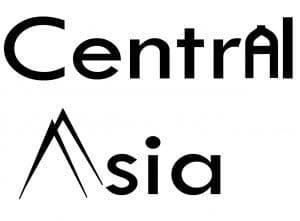Boralday Petroglyphs
Petroglyphs of Boralday
The Boralday Petroglyphs, located approximately 120 kilometers northwest of Shymkent in southern Kazakhstan, are one of the most significant and well-preserved collections of ancient rock art in Central Asia.
These petroglyphs, etched into the dark volcanic rocks of the Boralday Mountains, are believed to have been created by nomadic tribes during the Bronze Age (around 2000 BCE) and the early Iron Age (up to 500 BCE). The site spans a vast area and features thousands of carvings, making it a treasure trove for archaeologists, historians, and cultural enthusiasts.
The carvings of Boralday Petroglyphs
The carvings at Boralday depict a wide range of subjects, including animals such as deer, ibex, horses, and camels, as well as hunting scenes, ritualistic activities, and symbols that may represent early forms of writing or spiritual beliefs.
The detailed depictions of animals, often shown in motion, highlight the close relationship between the ancient nomads and their natural environment. Some of the petroglyphs also include human figures, often engaged in activities like hunting, dancing, or participating in ceremonies, offering a rare glimpse into the daily lives and cultural practices of these early societies.
The Boralday Petroglyphs are not only artistically significant but also provide valuable insights into the social and spiritual life of the region’s ancient inhabitants. The carvings are thought to have served multiple purposes, from marking territorial boundaries to acting as ritual sites or even early forms of storytelling. The presence of recurring motifs, such as solar symbols and geometric patterns, suggests a shared cultural or religious significance among the tribes that created them.


Vandalism at Boralday Petroglyph
The Boralday Petroglyphs, like many ancient cultural sites, have suffered damage over time, particularly from visitors who have vandalized the rock engravings by writing their names or leaving other markings. This type of vandalism is unfortunately common at many heritage sites around the world.
The carvings, which were created by prehistoric cultures thousands of years ago, have been significantly altered or obscured in certain areas due to these modern markings.
In some cases, people have scratched their names, symbols, and messages directly onto the rock surfaces, or even added graffiti around or over the ancient petroglyphs. This damages the integrity of the artwork, which is crucial for historical and archaeological research. Not only does this impact the aesthetic and historical value of the site, but it also prevents future generations from fully appreciating or studying the original works.

Visiting Boralday Petroglyphs
The site’s remote and rugged location has helped preserve the petroglyphs over millennia, though natural erosion and human activity pose ongoing threats to their conservation. Efforts have been made to document and protect the carvings, with some areas now designated as protected cultural heritage sites.
For visitors, the Boralday Petroglyphs offer a unique opportunity to step back in time and explore the rich history of Kazakhstan’s nomadic past. The surrounding landscape, characterized by dramatic rock formations and sweeping views of the steppe, adds to the site’s allure, making it a popular destination for both history buffs and nature lovers.
Page updated 31.1.2025
